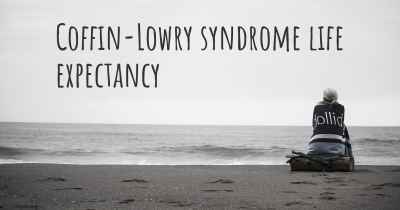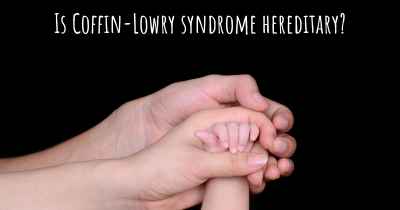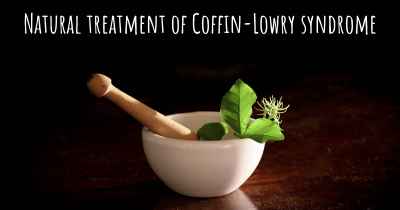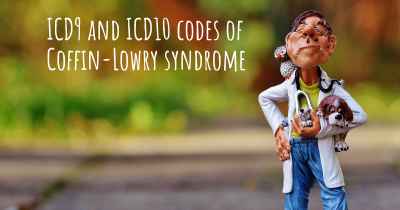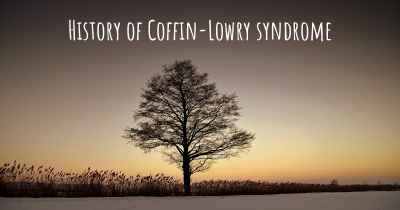Living with Coffin-Lowry syndrome. How to live with Coffin-Lowry syndrome?
Can you be happy living with Coffin-Lowry syndrome? What do you have to do to be happy with Coffin-Lowry syndrome? Living with Coffin-Lowry syndrome can be difficult, but you have to fight to try to be happy. Have a look at things that other people have done to be happy with Coffin-Lowry syndrome
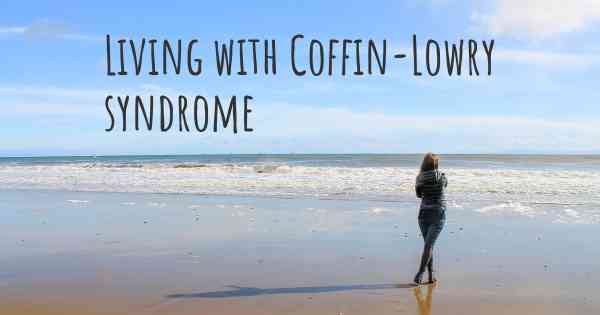
Living with Coffin-Lowry Syndrome
Coffin-Lowry Syndrome (CLS) is a rare genetic disorder that affects various aspects of an individual's development and overall health. While living with Coffin-Lowry Syndrome can present unique challenges, it is possible to lead a fulfilling life with proper care, support, and understanding.
Medical Management
Managing the medical aspects of Coffin-Lowry Syndrome is crucial for maintaining optimal health. Regular visits to healthcare professionals, including geneticists, neurologists, and other specialists, are essential. They can provide guidance on managing specific symptoms and offer appropriate treatments.
Medication: In some cases, medication may be prescribed to manage symptoms such as seizures, muscle stiffness, or behavioral issues. It is important to follow the prescribed medication regimen and communicate any concerns or side effects to the healthcare provider.
Therapies and Interventions
Various therapies and interventions can significantly improve the quality of life for individuals with Coffin-Lowry Syndrome. These may include:
Physical therapy: Physical therapy can help improve motor skills, coordination, and muscle strength. It may involve exercises, stretches, and assistive devices to enhance mobility and independence.
Occupational therapy: Occupational therapy focuses on developing skills necessary for daily living activities, such as self-care, fine motor skills, and adaptive techniques. This therapy aims to enhance independence and functional abilities.
Speech and language therapy: Speech and language therapy can assist individuals with Coffin-Lowry Syndrome in improving communication skills, speech clarity, and language comprehension. Augmentative and alternative communication methods may also be explored.
Behavioral interventions: Behavioral interventions, such as applied behavior analysis (ABA), can help manage challenging behaviors and promote positive social interactions. These interventions are tailored to the individual's specific needs and may involve behavior modification techniques and social skills training.
Educational Support
Education plays a vital role in the development of individuals with Coffin-Lowry Syndrome. It is important to create an inclusive and supportive learning environment. Consider the following:
Individualized Education Plan (IEP): Collaborate with educators to develop an IEP that addresses the unique learning needs of the individual. This plan may include accommodations, modifications, and specialized instruction to facilitate academic progress.
Special education services: Access to special education services, such as resource rooms or inclusion classrooms, can provide additional support and tailored instruction. Working closely with teachers and educational professionals can help ensure the best educational outcomes.
Emotional and Social Support
Living with Coffin-Lowry Syndrome can sometimes lead to emotional and social challenges. It is crucial to provide a supportive environment and foster social connections:
Family support: Families play a vital role in providing emotional support and advocating for individuals with Coffin-Lowry Syndrome. Open communication, understanding, and access to support networks can greatly benefit both the individual and their loved ones.
Community involvement: Encouraging participation in community activities, support groups, or organizations dedicated to Coffin-Lowry Syndrome can help individuals connect with others facing similar challenges. These communities can provide valuable emotional support, information sharing, and a sense of belonging.
Self-Care and Well-being
Self-care and overall well-being are essential for individuals with Coffin-Lowry Syndrome. Here are some considerations:
Healthy lifestyle: Encourage a balanced diet, regular exercise, and sufficient sleep to promote overall health and well-being. Consult with healthcare professionals for specific dietary recommendations and exercise guidelines.
Stress management: Explore stress management techniques, such as relaxation exercises, mindfulness, or engaging in enjoyable activities. Managing stress can positively impact overall health and emotional well-being.
Continued Monitoring and Adaptation
Living with Coffin-Lowry Syndrome requires ongoing monitoring and adaptation to changing needs. Regular check-ups with healthcare professionals, staying informed about the latest research and treatments, and maintaining open communication with the support network are crucial.
Remember, each individual with Coffin-Lowry Syndrome is unique, and their needs may vary. It is important to consult with healthcare professionals and specialists to develop a personalized plan that addresses specific challenges and promotes the best possible quality of life.
